Learn the 7 Primal Movements for More Functional Fitness
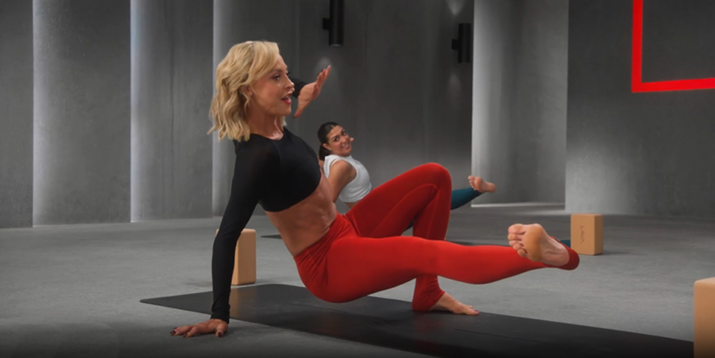
If you’re looking to improve mobility, enhance performance, and foster a healthy mind-body connection, it may be time to take your workouts back to the basics with primal movements and functional strength training.
Primal movement workouts incorporate natural movement patterns — like squatting, twisting, and bending — that serve as the foundation for the physical tasks we do in everyday life, like carrying a bag of groceries or picking up a pen that rolled under your desk.
Because these primal movements are so instinctual, they can sometimes be an afterthought in your workouts. After all, when you’re trying to push your limits, spending time on the skills you’ve been honing since you were a baby may seem…well, basic.
But primal movements can offer amazing benefits for your mind and body.
In fact, natural movement is one of the nine lifestyle habits that are common among people living in Blue Zones, the regions of the world with the best longevity.
Here’s how these functional movements can change the way your body moves and feels.
What Is Primal Movement?
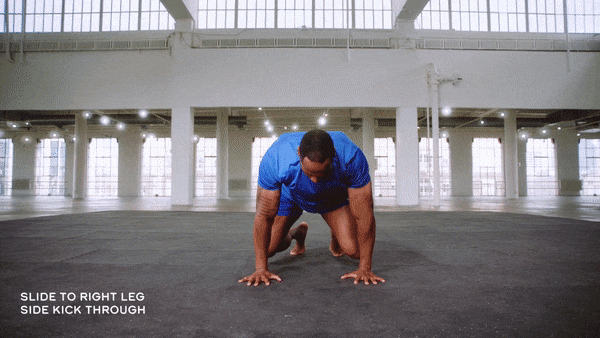
Primal movement is a form of fitness that taps into foundational movement patterns. And while it’s currently having a moment — searches for “primal movement” have jumped 120 percent on Pinterest — it’s rooted in movements that have been part of basic human biology for millions of years.
Primal movements are the natural movement patterns that humans are hardwired to do. Chances are, no one had to teach you how to push, pull, twist, or crawl — these milestones happen naturally.
But as we age, we tend to spend less time performing these movements and more time sitting still. Over time, even simple tasks like getting up off the floor can start to feel like a challenge.
Luckily, there’s a fix: Incorporating primal movements into your workout routine can help to reinforce proper form, regain strength, and increase agility — so you can move through your days with ease.
What Are the 7 Primal Movement Patterns?
Primal movement workouts are developed around seven foundational movements:
1. Squatting

Squats are a staple in nearly every strength-training program, and for good reason — this functional movement engages nearly every muscle in your lower body.
But learning how to squat properly can also make everyday life easier, whether you’re getting up from the couch or picking up a heavy package off your porch.
2. Lunging
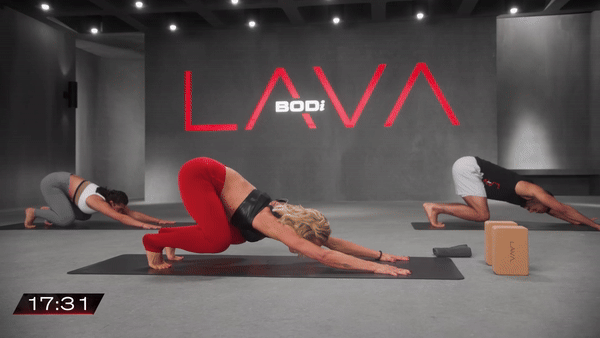
To lunge, you simply take a step forward or backward while bending the front knee, keeping your torso erect.
The forward lunge is one of the best exercises for sculpting lean, powerful legs, but it also helps with everyday efforts like walking, running, and climbing stairs.
3. Hinging
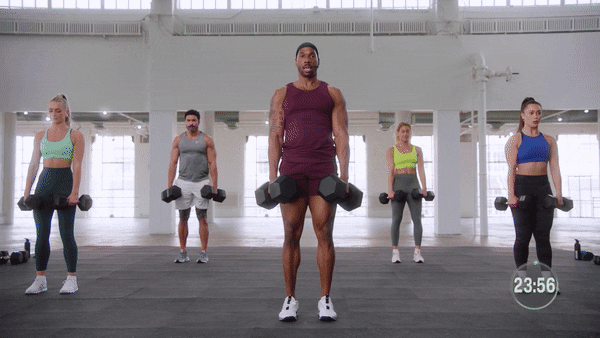
This simple movement involves pushing your hips backward and lowering your torso until it’s almost parallel to the floor.
It’s a crucial part of the good morning exercise and the deadlift, but you also use it throughout the day to grab items off a low shelf or pick up something you dropped on the floor.
4. Pushing
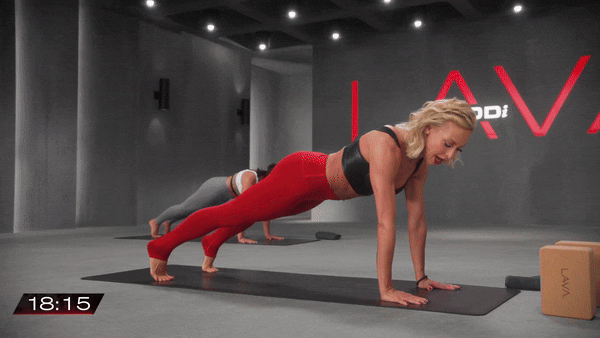
This movement pattern involves using upper body strength to extend your arms away from the body as you would in a perfect push-up or a shoulder press.
We rely on this movement pattern for practical tasks like pushing a stroller, mowing the lawn or putting something away on a high shelf.
5. Pulling
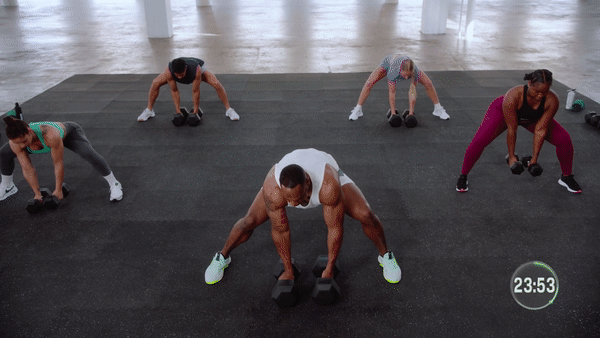
Chin-ups and pull-ups are the most obvious examples of this functional movement, which involves pulling objects toward the body.
These movements strengthen the shoulders, upper back, biceps, and core — which can help with everything from opening a heavy door to picking up your kids.
6. Rotating
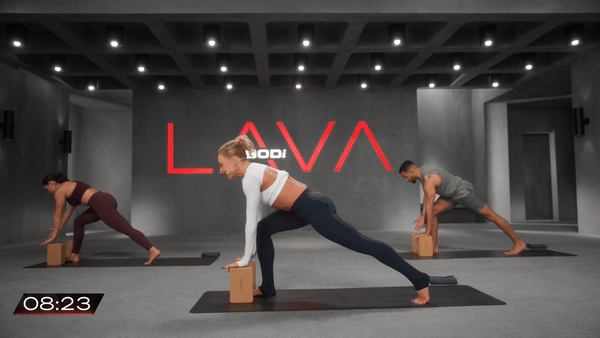
You twist at your torso during exercises like the bicycle crunch and the dumbbell reverse chop.
But you also perform this basic movement throughout the day without even thinking about it — buckling your seatbelt, taking off a jacket, reaching for ingredients while you’re cooking, or looking over your shoulder before you cross a busy street.
Adding rotation to your workouts with exercises can help improve balance and coordination during these tasks.
7. Gait

Gait, also called locomotion, refers to basic walking and running patterns. Improving your form during these movements can help with balance, stability, and efficiency.
Why Is Primal Movement So Important?
Primal movement provides the foundation for just about everything else we do — no matter how simple or complex.
Incorporating these seven foundational movements into your workouts can help you honor your body and improve just about every component of fitness, including strength, mobility, balance, and coordination.
Mastering these primal movements can give you newfound agility that can help you take on physical challenges with confidence and reduce your risk of injury.
And the familiar, intuitive movements can help you reconnect with how fun it can be to get moving.
How Is Primal Movement Similar to Functional Strength Training?
Primal movement shares some key similarities with functional strength training:
- Primal movement and functional strength training both include compound exercises that engage multiple joints and muscle groups at a time. Compared with isolation exercises (which focus on a single muscle or muscle group), these types of movements translate better into real-world strength and mobility.
- They can benefit strength, coordination, mobility, and agility.
- They can add variety and an element of fun to your workout routine.
Primal movement focuses on the natural movement patterns that we perform throughout the day.
Functional strength training incorporates a broader range of movements and emphasizes unilateral (single-limb) movements like the single-leg Romanian deadlift or alternating shoulder press to improve stability.
The best approach is to combine the two, so you can build a solid foundation while improving overall fitness.
“Functional training can improve our mobility, overall strength, and endurance when programmed and executed correctly,” says Jacque Crockford, DHSc, an ACE-certified personal trainer and health coach and senior product manager for the American Council on Exercise (ACE).
“By including movements like squat, lunge, push, pull, and rotate into exercise plans — and programming these movement patterns through different planes of motion — the exerciser will enhance their overall ability to function and perform in both sport and life,” Crockford adds.
How Do I Get Started with Primal Movement Workouts?
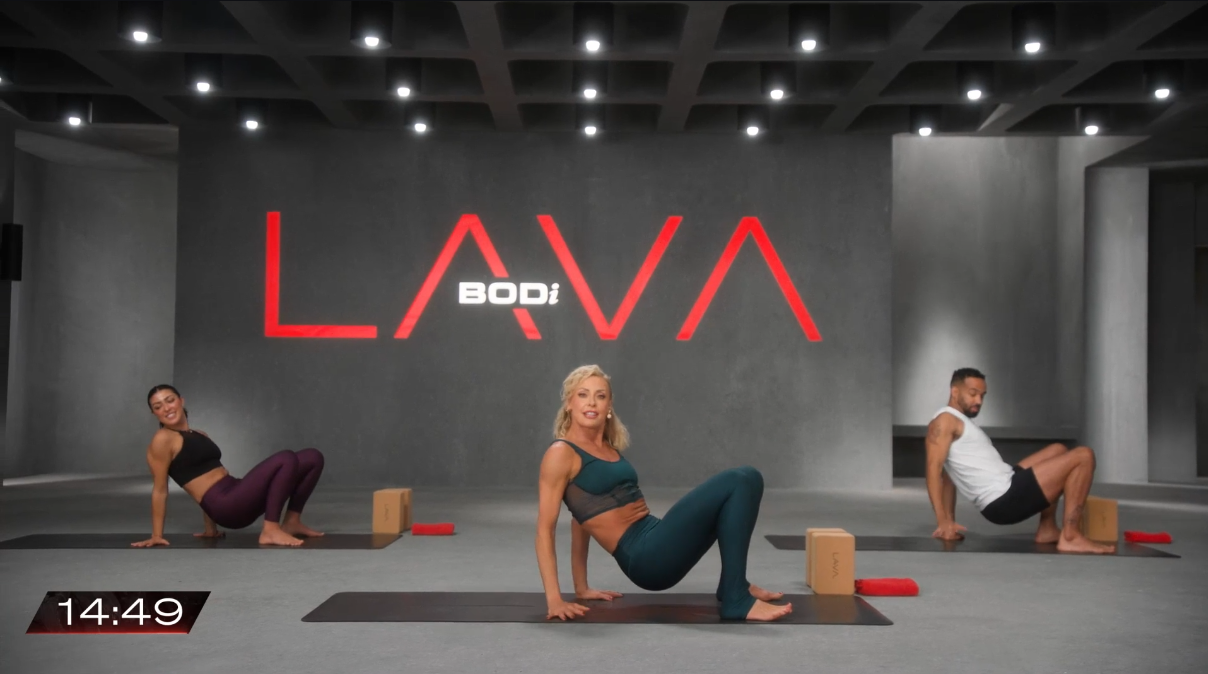
Build a body that’s ready for anything with CHOP WOOD CARRY WATER, a program that combines primal movements with functional strength training to help you improve strength and mobility to promote a better mind-body connection.
The phrase “chop wood, carry water” refers to the simple daily tasks required to achieve big goals — and the idea that a solid foundation will help you keep moving in the direction you want.
In this 20-workout program, Super Trainer Amolia Cesar will take you through a mix of strength training, metabolic conditioning, primal movement, and recovery.
You’ll practice a type of primal movement known as animal flow — ground-based, bodyweight movement in which you flow from one position to another. With focused consistency and repetition, you’ll master the movements and get stronger mentally and physically.
No matter where you are in your fitness journey, primal movement can help you solidify your foundation while building functional strength and mobility.
Making these basic movement patterns an intentional part of your daily ritual can translate into better mobility in your other workouts — and throughout every aspect of your day-to-day life.
